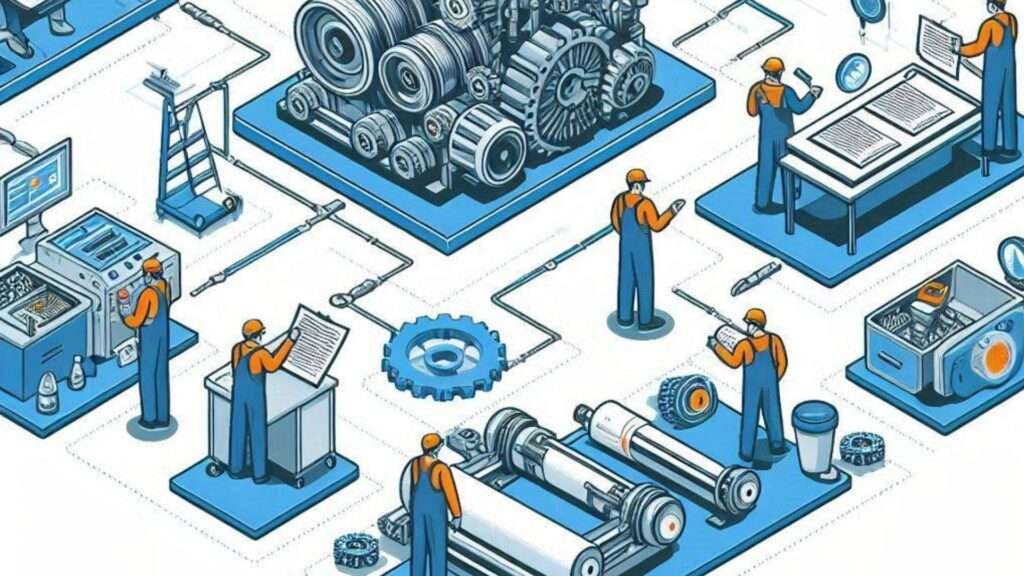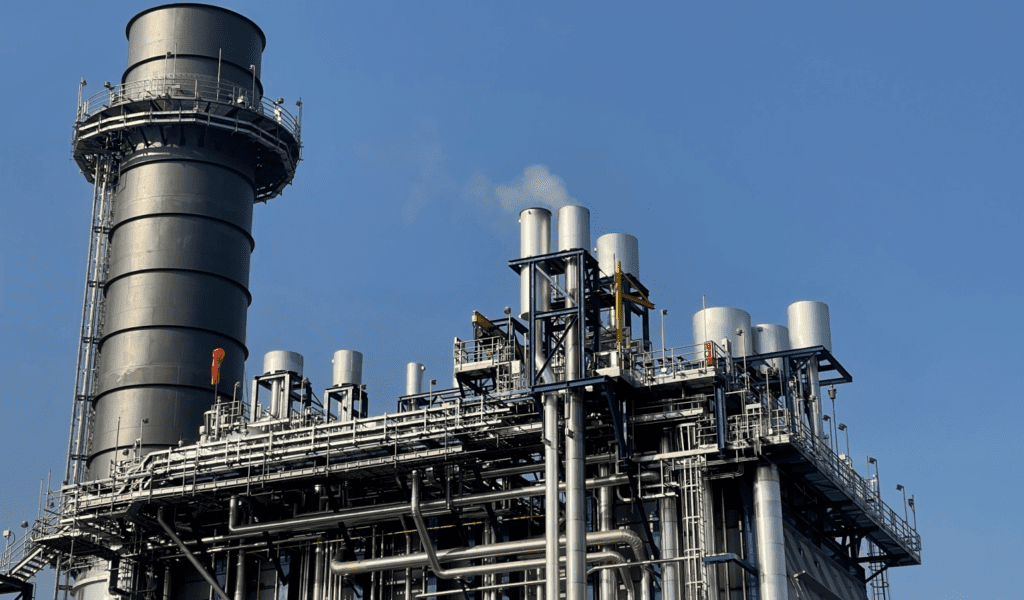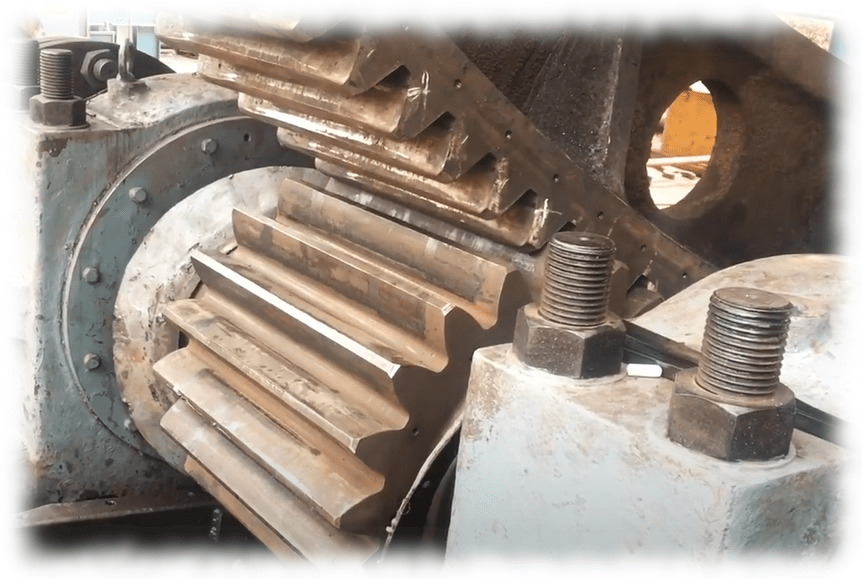Leveraging Asset Management Tools And Techniques
A methodical approach is needed for effective asset management, one that involves managing and optimising your business’s assets to maximise their value and guarantee overall efficacy.
A broad range of business operations are covered by this practice, such as the acquisition of assets, the creation and implementation of strategies, maintenance, analysis and auditing, and final disposal.
This guarantees that each asset makes the greatest possible contribution to the success of your business.
Because it directly affects financial performance, operational efficiency, and strategic planning, effective asset management is essential.
Leveraging Asset Management for Business Success.
Effective asset management is critical for businesses looking to optimise their resources, reduce costs, and generate long-term value.
Businesses that implement effective asset management tools, procedures, and software can improve decision-making, extend the life of their assets, and align their asset portfolio with strategic goals.
The primary goals of asset management are to ensure that assets are used effectively, maintained properly, and replaced or disposed of as needed. This requires careful planning and execution to balance risk, performance, and cost.
In this post, I will discuss how asset management can help businesses achieve their goals and ensure long-term growth.
Aligning Asset Management with Corporate Objectives.
Your company must first create clear asset management policies and objectives that are in line with your overall business strategy before you can use asset management tools and techniques effectively. Typically, this entails:
1. Establishing asset management objectives that align with the mission of your company.
2. Establish a thorough asset hierarchy and inventory.
3. Determine the criticality of each asset and then develop asset management strategies.
4. Determining asset performance through the establishment of key performance indicators (KPIs) (What gets measured, gets managed).
5. Creating an asset risk management framework.
By laying these groundwork, your business can make sure that its asset management initiatives are concentrated on generating observable value, revealing hidden value, and bolstering strategic goals.
How Do Asset Management Tools Drive Better Business Outcomes?
Asset management encompasses asset identification, tracking, maintenance management, lifecycle analysis, criticality ranking, and risk mitigation.
Using these components can help your company increase productivity, reduce downtime, and make more informed decisions.
When your company practices effective asset management, it can increase its return on investment, reduce operating costs, and allocate resources more efficiently.
It also helps to reduce the risk of asset loss or failure, which can have serious implications for operations and finances.
Furthermore, an organised framework for asset management makes it easier to comply with legal requirements and industry standards, thereby improving the organization’s market position.
Using cutting-edge asset management techniques, tools, and software is required to gain a sustainable competitive advantage.
These solutions improve the overall effectiveness and efficiency of asset management procedures by providing real-time insights, automating repetitive tasks, and allowing for data-driven decision-making.
Asset management is critical to ensuring long-term success as your business develops and grows.
Optimising business success necessitates effective asset management, which requires specialised tools and techniques.
Asset management tools are critical for ensuring that assets are used effectively, maintained properly, and replaced as needed to support business objectives.
These tools and methods help organisations achieve their goals and implement asset management policies.
Asset tracking systems are critical components of asset management.
These systems, which provide real-time data on asset location, usage, and status, enable businesses to maximise asset utilisation while minimising downtime.
Asset tracking systems can be either simple barcode systems or sophisticated GPS-based solutions, with each tailored to a specific set of needs.
Monitoring systems are also an important consideration. They enable early detection of potential issues by continuously monitoring asset functionality and state.
This proactive strategy increases the asset’s lifespan and reduces unexpected failures. Examples include environmental sensors in data centres and machinery vibration monitors.
Asset management necessitates data management tools. These instruments manage massive amounts of data generated by various sources, providing precise and timely insights for informed decision-making.
They facilitate data analysis, reporting, and visualisation, all of which are required to understand asset performance and identify areas for improvement.
Aside from these tools, several methods improve asset management effectiveness. Predictive maintenance, for example, uses data analytics and machine learning to forecast when assets will require maintenance, lowering maintenance costs and avoiding unscheduled downtime.
Condition monitoring entails performing routine inspections and evaluations to prevent failure and ensure that assets are operating within acceptable limits.
Advanced lifecycle costing is another approach to calculating an asset’s total cost of ownership over its entire lifecycle.
This strategy saves money and promotes sustainability by allowing businesses to make more informed decisions about asset purchases, maintenance, and disposal.
Combining these tools and techniques allows organisations to develop a comprehensive asset management plan that maximises asset efficiency, reduces costs, and fosters long-term business success.
Leveraging Quality Asset Management Software.
Strong features to expedite procedures, increase data accuracy, and strengthen decision-making are provided by Quality Asset Management Software (QAMS) systems. Important characteristics to search for are:
1. Asset tracking, identification, and supervision.
2. Developing a Maintenance Plan.
3. The scheduling, planning, and implementation of maintenance.
4. Context-related condition monitoring and predictive maintenance.
5. Analyses and reports.
6. Tools for evaluating risk.
7. Connectivity with other operational and business systems, like Citec.
Businesses can reduce manual labour, gather asset information, and derive valuable insights that support strategic decision-making by utilising excellent asset management software.
Utilising asset management software is necessary to lower costs and boost operational effectiveness.
Asset tracking systems and comprehensive data management platforms are just two of the many asset management tools available, each tailored to the specific needs of a business.
These tools make it easier to track, monitor, and manage assets in a systematic manner, ensuring longevity and maximum efficiency.
Asset tracking software is essential for effective asset management. Companies can use this software to keep an accurate inventory of their assets, reducing the possibility of theft or loss and improving accountability.
Asset tracking tools allow businesses to track the movement and usage patterns of their assets by providing precise location data through technologies such as RFID, GPS, and barcode scanning.
Monitoring systems are also an important consideration. These systems alert managers to potential problems before they become costly by continuously monitoring the performance and condition of the assets.
Estimate maintenance requirements using data analytics, predictive maintenance tools, and a subset of monitoring systems in order to reduce downtime and extend asset life.
Data management platforms, on the other hand, collect asset data from multiple sources and consolidate it into a single repository.
Businesses can now make well-informed decisions based on precise, up-to-date data thanks to this integration’s extensive reporting and analytics capabilities. Enhanced data transparency ensures regulatory compliance while also assisting with strategic planning.
Selecting the appropriate asset management software is critical. Businesses must think about scalability, cost-effectiveness, user friendliness, and integration capabilities.
IBM Maximo, SAP, Ellipse, Pronto Xi, and Oracle E-Business Suite are some of the most popular solutions available. Each has distinct features and functionalities that meet the needs of different industries and operational scales.
An ideal match is achieved by thoroughly evaluating software capabilities and business requirements, resulting in increased output and more efficient operations.
Overall, the careful selection and implementation of asset management software can have a significant impact on a business’s success.
These tools help businesses maximise asset value and achieve long-term operational excellence by enabling efficient asset tracking, monitoring, and data management.
Applying Asset Management Techniques.
In order to get the most out of asset management tools, businesses should think about using strategies like these:
1. Lifecycle costing: Examining an asset’s entire cost of ownership from purchase to disposal.
2. Reliability, Risk, and Criticality Centred Maintenance: To minimise downtime, assure asset longevity, and prevent failures, develop and concentrate inspection and maintenance efforts on critical assets.
3. Predictive maintenance: By employing sophisticated predictive maintenance features that make use of cutting-edge technologies and data analysis to spot possible equipment failures before they happen, proactive maintenance can be carried out, minimising unscheduled downtime and anticipating maintenance needs.
4. Asset performance management: Monitoring, assessing, and improving assets’ performance over time.
5. Portfolio optimisation: distributing risk, expenses, and returns among the various assets in the portfolio.
These techniques enable businesses to make data-driven decisions about asset acquisition, maintenance, and replacement, resulting in increased efficiency and cost savings.
Ensuring Governance and Compliance.
Effective asset management requires strong governance frameworks and procedures to ensure accountability and regulatory compliance. This includes:
1. Establishing clear roles and responsibilities for asset management.
2. What are your company’s statutory compliance requirements, how will you meet them, and how frequently?
3. Establishing internal controls and audit procedures.
4. Maintaining compliance with industry, engineering, safety, community, and environmental standards and regulations.
5. Regularly report and evaluate asset performance and risks.
To maximise asset utilisation, reduce risks, and meet legal and regulatory requirements, asset management must be built on three pillars: (1) governance, (2) risk, and (3) compliance.
Governance and compliance are designed to ensure that asset management procedures adhere to industry standards as well as applicable laws, regulations, and ethical standards. This helps to avoid legal ramifications and penalties.
Businesses that implement good governance practices can reduce risks, increase transparency, satisfy regulators, and boost stakeholder trust in their asset management strategy.
Long-term corporate success is dependent on governance and compliance.Governance frameworks, guidelines, and procedures ensure that an organization’s resources are effectively managed and controlled, thereby protecting your operating licence at all times.
Routine audits, inspections, and reporting are used to ensure that all asset management operations comply with regulatory standards. Compliance by all parties involved, including investors, consumers, and government agencies, helps to foster trust.
The first step in the governance process is to develop comprehensive and transparent policies, processes, and guidelines that define asset management accountability and duties.
This includes establishing asset managers’ roles and responsibilities, developing performance measures, and ensuring that asset management procedures meet regulatory requirements as well as the organization’s strategic objectives.
Quality governance ensures that decisions about the purchase, maintenance, and disposal of assets are clear, consistent with the company’s overall goals, and legal and regulatory requirements.
Risk management is a key component of asset management. It includes identifying, assessing, and mitigating risks associated with asset operations. This could include risks to finances, operations, and compliance.
Establishing a strong framework for risk management enables businesses to anticipate potential problems and devise mitigation strategies.
Proactive risk management enables organisations to protect their asset portfolio, avoid costly disruptions, and ensure compliance.
Software for asset management is critical to ensuring governance and compliance. These tools provide comprehensive solutions for creating audit trails, documenting compliance actions, and tracking asset performance.
Great asset management software can make reporting easier, automate compliance checks, and provide real-time insights into asset conditions.
Businesses can use this software to improve their governance framework, speed up compliance procedures, and ensure they continue to follow legal and best practices.
Realizing Hidden Asset Value.
The ability to find hidden value within the asset portfolio is one of the main benefits of comprehensive asset management. This can be achieved by:
1. Determining redundant or under-utilised assets that can be sold or put to better use.
2. Redesigning and modifying engineering to increase performance.
3. Improving maintenance plans to extend the life of assets.
4. Using data analytics to enhance the performance of assets.
5. Looking into generating new income from current assets.
Companies that approach their asset portfolio holistically can boost their return on investment and uncover substantial value.
Performance management, asset optimisation, and utilisation can all significantly boost a business’s effectiveness, longevity, profitability, and efficiency. Organisations can reduce waste and costs by adopting a systematic approach to asset management.Optimising assets is one of the best strategies for finding hidden value.
This entails analysing the asset lifecycle to determine the most cost-effective approaches to acquisition, maintenance, and disposal.
This enables businesses to make informed decisions that lower total cost of ownership and extend the useful life of their assets.
Effective asset optimisation makes it easier to identify underperforming assets that are potentially wasting resources and replace them with more effective ones.
Another important aspect of asset management is utilisation. Make sure that all resources and equipment are fully utilised to avoid unnecessary capital expenditures for new purchases. Businesses can increase productivity while reducing costs by monitoring usage trends and aligning asset availability with operational requirements.
This strategy improves financial outcomes while increasing operational efficiency.
Asset management and performance management are closely related.
Businesses can identify areas for improvement through routine asset performance monitoring and assessment.
This can include regular maintenance, improvements, or even the careful redistribution of resources to areas where they will yield higher returns.
Using data analytics and performance metrics, businesses can learn more about asset behaviour, anticipate potential failures, and take proactive measures to ensure ongoing operational efficiency.
Asset management software is essential for identifying hidden value. These cutting-edge tools enable businesses to collect and analyse massive amounts of data, providing real-time insights into asset performance and utilisation.
For example, predictive maintenance software can detect equipment problems before they occur, saving maintenance costs and causing significant downtime.
Effective asset management is a multifaceted process that combines performance management, utilisation, and optimisation to uncover hidden value.
Companies can achieve operational excellence and financial success by converting data into actionable insights using high-quality asset management software.
Maximizing Asset Lifecycle Management.
A company’s assets must be efficiently managed throughout their lifecycle to ensure their long-term viability and effectiveness.
End-of-life renewal planning and comprehensive midlife overhauls are two of the most effective strategies for increasing asset lifecycle value.
This procedure includes strategically evaluating the assets’ current state, projecting their future performance, and determining when overhaul and renewal work is most appropriate.
Companies can extend the useful life of their assets and prevent unanticipated failures by implementing structured mid- and end-of-life plans.
Strategies for replacement and overhaul are critical to effective asset lifecycle management. The decision of whether to replace or overhaul an asset is critical for both financial performance and operational continuity.
The asset’s age, performance, maintenance costs, and technological advancements are all taken into account when developing an optimal overhaul and replacement plan. Businesses can reduce downtime and increase return on investment by planning their overhaul and replacement schedules around these factors.
Lifecycle management plans must include asset disposal management. Adherence to appropriate disposal protocols ensures that assets are retired in an environmentally responsible manner while also meeting regulatory requirements.
This procedure could include selling, recycling, or repurposing assets in order to reduce waste and achieve sustainability goals.
Predictive maintenance techniques, in addition to being an excellent tool for estimating when an asset will most likely reach the end of its life, can significantly improve asset lifecycle management.
Predictive maintenance is the use of data analytics and monitoring tools to predict an asset’s failure and then initiate replacement maintenance plans.
By taking a proactive approach, you can reduce downtime, save on maintenance costs, and extend the life of an asset until it becomes impractical to operate. Predictive maintenance also improves overall asset performance by ensuring that machinery remains in good working order throughout the duration of each asset’s scheduled usage campaign.
Another asset management technique is advanced lifecycle costing. When the costing module is combined with the predictive maintenance module, businesses can calculate an asset’s total cost of ownership over its lifetime and use that information to make better decisions about acquisition, maintenance, mid-life overhauls, and end-of-life replacements.
This thorough cost analysis enables businesses to better allocate resources and meet their financial goals.
Your company can significantly improve asset lifecycle management, resulting in maximum operational efficiency, lower costs, and long-term sustainability, ultimately leading to success, by implementing best current practices for asset midlife rebuilds, end-of-life replacements, disposal management, predictive maintenance, and advanced lifecycle costing.
Integrate Asset Management Tools & Techniques into Business Strategies.
To improve overall operational effectiveness, efficiency, and long-term success, you must incorporate asset management into your business plan.
The first step is to align asset management goals with overarching business goals.
When asset management initiatives are tightly linked to the company’s strategic vision, assets are used and maintained in ways that support larger organisational goals such as cost reduction, increased productivity, and driving innovation.
To achieve this alignment, companies must develop comprehensive asset management frameworks. These frameworks function as well-organized guides that specify the best way to manage assets over their lifetime.
Businesses can use industry standards and best practices to develop effective procedures for managing tangible, financial, and intangible assets.
This methodical approach supports resource optimisation, compliance, and risk mitigation.
Understanding and developing asset management maturity is another critical component of incorporating asset management into a business plan.
Asset management maturity refers to how well an organization’s asset management procedures have been standardised and improved. Higher maturity companies typically have more advanced asset management capabilities, such as advanced data analytics, predictive maintenance, and continuous improvement processes.
Businesses that assess their current level of maturity can identify areas for improvement and invest in the necessary technologies, training, and tools to advance their practices.
The success of asset management initiatives is dependent on the use of key performance indicators (KPIs). KPIs are measurable indicators that help businesses track their progress towards asset management objectives.
By monitoring these KPIs on a regular basis, organisations can gain insights into the efficiency and effectiveness of their asset management strategies, allowing them to make data-driven decisions that improve performance.
To optimise investment returns and incorporate asset management into business strategies, your company should:
1. Ensure purposeful alignment of objectives.
2. Create a robust asset management framework.
3. Increase business management maturity.
4. Use key performance indicators (KPIs) to measure success.
These steps are critical for leveraging assets to support long-term growth and maintain a competitive advantage in the market.
Intertwine the 3 Pillars of Business Management With Asset Management.
To ensure a comprehensive approach to business management, companies should focus on the three key pillars:
1. People: Implement effective leadership development programs. Establish clear communication channels across all levels. Create an interdependent and inclusive work environment. Implement performance management and reward systems.
2. Processes: Develop and maintain quality management systems. Implement risk management and compliance procedures. Establish key performance indicators (KPIs) for process evaluation. Create feedback loops for continuous process improvement.
3. Technology: Ensure robust cyber-security measures. Implement cloud-based solutions for scalability and flexibility. Utilize customer relationship management (CRM) systems. Invest in emerging technologies that can enhance the triple bottom line of your business.
Organisations can address each of the three pillars and create a robust framework for business management that supports the creation of long-term value by keeping the following five points in mind:
1. Holistic Approach: Successful business management requires a balanced focus on people, processes, and technology. Neglecting any one pillar can lead to inefficiencies and missed opportunities.
2. Continuous Improvement: All three pillars should be subject to ongoing evaluation and enhancement. This includes regular training for staff, process optimization, and technology upgrades.
3. Alignment with Business Strategy: The implementation of the three pillars should always be aligned with the overall business strategy and goals. This ensures that all efforts contribute to the company’s long-term success.
4. Adaptability: The three pillars framework provides a structure for businesses to adapt to changing market conditions, technological advancements, and evolving workforce dynamics.
5. Measurable Outcomes: By focusing on these pillars, businesses can achieve tangible improvements in efficiency, productivity, employee satisfaction, and ultimately, profitability. It’s crucial to establish metrics for each pillar to track progress and demonstrate value.
Beyond the conventional metric of financial profitability, the triple bottom line (TBL) is a framework for assessing the performance of businesses as follows:
1. Profit: Economic profit is the traditional bottom line that accounts for both the company’s financial performance and its economic value creation.
2. People (Social): This dimension focuses on how the business affects people, such as clients, staff members, and the general public.
3. Planet (Environmental): The company’s sustainability initiatives and environmental impact are taken into account in this aspect.
According to the TBL, businesses should measure their success not only based on financial performance, but also on their social and environmental impacts and some key points regarding the triple bottom line:
Balanced Approach: It promotes a balanced approach, encouraging businesses to balance economic goals with social and environmental responsibilities.
1. Sustainability focus: It prioritises long-term sustainability over short-term gain.
2. Stakeholder consideration: It takes into account the interests of a variety of stakeholders, including shareholders.
3. Reporting: Many businesses now produce sustainability reports alongside financial reports to address all three aspects.
4. Measurement challenges: While financial metrics are standardised, quantifying social and environmental impacts can be more difficult.
Companies that effectively manage their triple bottom line often gain a competitive advantage through improved reputation and efficiency.
The triple bottom line approach reflects rising consumer and investor interest in corporate social responsibility and sustainable business practices. It represents a shift towards a more holistic view of business success that takes into account the long-term effects on society and environment.
How it all ties together.
Effective business management principles, such as the three pillars and the triple bottom line, are inextricably linked to asset management tools and techniques, as shown below:
Alignment with the Three Pillars.
a) People: Asset management requires skilled personnel. Training programs and cross-functional collaboration are crucial for effective asset utilization.
b) Processes: Standardized processes for asset acquisition, maintenance, and disposal are key to efficient asset management.
c) Technology: Advanced analytics, AI, and IoT sensors play a significant role in modern asset management, enabling predictive maintenance and real-time monitoring.
Triple Bottom Line Integration.
a) Profit: Effective asset management directly impacts financial performance by optimizing asset lifecycle costs and improving operational efficiency.
b) People: Proper asset management ensures safer working conditions and can improve job satisfaction by providing employees with well-maintained tools and equipment.
c) Planet: Sustainable asset management practices can reduce energy consumption and waste, aligning with environmental goals.
Asset Management Tools and Techniques.
Asset/Maintenance Management Software & Enterprise Resource Planning Systems (AMS/CMMS & ERP):
a) Monitors asset performance, maintenance schedules, and costs.
b) Aligns with the business processes and technological pillars.
c) Improves efficiency, safety, and waste reduction, which benefits all three bottom lines.
d) Provide a comprehensive overview of an organization’s assets throughout their lifecycle.
e) Integrates with other business systems to provide comprehensive management.
f) Supports all three pillars and bottom-line aspects.
FMECA (Failure Mode, Effects, and Criticality Analysis).
This is a powerful technique that intertwines very well with the goals of asset management, business pillars and the triple bottom line.
FMECA is a systematic method for identifying potential failures in a system, product, or process. It assesses the risk associated with these failures, their causes, and potential effects on the system and end-user.
Connection to the Three Pillars:
1. People: FMECA requires cross-functional teams, promoting collaboration.
a. It relies on expert knowledge, emphasizing the importance of skilled personnel.
b. Results can inform training programs to address identified risks.
2. Processes: FMECA is itself a structured process that can be standardized across an organization.
a. It helps identify process weaknesses and opportunities for improvement.
b. Outcomes of FMECA often lead to process modifications or new procedures.
3. Technology: Modern FMECA often utilizes specialized software for analysis and documentation.
a. Results can guide technology investments to mitigate identified risks.
b. Integration with other systems (like CMMS, ERP or EAM) enhances its effectiveness.
Alignment with the Triple Bottom Line:
1. Profit (Economic): By identifying and mitigating potential failures, FMECA can reduce downtime and associated costs.
a. It helps prioritize maintenance activities, optimizing resource allocation.
2. People (Social): FMECA improves safety by identifying and addressing potential hazards.
a. It can enhance product reliability, leading to improved customer satisfaction.
3. Planet (Environmental): By preventing failures, FMECA can reduce waste from defective products or processes.
a. It can identify opportunities to improve energy efficiency and reduce environmental impact.
Integration with Asset Management:
1. Risk-Based Asset Management: FMECA provides a systematic approach to identifying and quantifying asset-related risks.
a. It helps prioritize assets based on criticality, informing maintenance strategies.
2. Predictive Maintenance: FMECA can inform predictive maintenance programs by identifying failure modes and their indicators.
a. This aligns with condition-based monitoring approaches.
3. Lifecycle Cost Analysis: FMECA contributes to understanding the long-term costs associated with asset ownership and operation.
a. It helps in making informed decisions about asset replacement or upgrade.
4. Reliability Improvement: By systematically addressing potential failure modes, FMECA directly contributes to improving asset reliability.
Continuous Improvement Cycle.
FMECA is not a one-time activity but part of a continuous improvement cycle. It aligns with the principle of ongoing evaluation and enhancement in both business and asset management.
Data-Driven Decision Making.
FMECA provides quantitative data on risks and potential impacts. This supports data-driven decision-making, a key aspect of modern business and asset management.
Regulatory Compliance.
In many industries, FMECA is part of regulatory compliance. This ties into the risk management and compliance aspects of effective business management.
Prevent Common Causes of Equipment Failure To Ensure Success.
Equipment failure is a critical concern for any industry reliant on machinery and technology. The consequences of such breakdowns can be far-reaching, affecting not only operational efficiency but also financial stability and safety protocols.
When equipment fails, it can halt production lines, delay project timelines, and necessitate costly repairs or replacements. Moreover, the potential safety hazards associated with malfunctioning machinery can pose significant risks to personnel, leading to injuries or worse.
Maintenance plays an indispensable role in mitigating equipment failure. By implementing regular and thorough maintenance routines, companies can extend the lifespan of their machinery, ensure smooth operations, and avoid unexpected downtimes.
Maintenance is not merely about fixing problems as they arise; it involves proactive measures to prevent issues before they manifest.
This proactive approach can drastically reduce the likelihood of equipment failure, ultimately saving time and resources.
Several common issues lead to equipment breakdowns, often stemming from preventable causes. Among the most prevalent are lack of lubrication and contamination. Proper lubrication is vital for ensuring that moving parts operate smoothly and efficiently, minimizing friction and wear.
Conversely, contamination, whether from dirt, debris, or other foreign substances, can compromise the integrity of machinery, leading to accelerated degradation and failure.
By understanding and addressing these issues, businesses can enhance their operational reliability, reduce maintenance costs, and ensure a safer working environment.
The Role of Lubrication in Equipment Maintenance.
Lubrication is a fundamental aspect of equipment maintenance, serving as a critical factor in ensuring the longevity and efficiency of machinery.
It involves the application of substances, known as lubricants, to various mechanical components to minimize friction and wear.
By reducing the direct contact between moving parts, lubrication significantly diminishes the wear and tear that can lead to equipment failure.
One of the primary functions of lubrication is to create a thin film between surfaces in motion, thereby reducing friction.
This reduction in friction not only prevents surface damage but also contributes to the efficient operation of machinery.
Without adequate lubrication, metal surfaces can grind against each other, generating excessive heat and leading to premature equipment degradation.
In addition to reducing friction, lubrication plays a vital role in heat dissipation. As machinery operates, it generates heat, which can escalate to damaging levels if not properly managed.
Lubricants help in absorbing and dispersing this heat, maintaining optimal operating temperatures and preventing overheating.
This thermal regulation is crucial for maintaining the integrity and performance of equipment over time.
Various types of lubricants are used across different industries, each tailored to specific applications.
Common categories include oils, greases, and synthetic lubricants. Oils are often used in high-speed machinery due to their excellent flow characteristics and thermal stability.
Greases, on the other hand, are ideal for applications requiring a thicker, more adhesive lubricant to stay in place under heavy loads or in environments where re-lubrication is infrequent.
Synthetic lubricants offer advanced properties, such as extreme temperature resistance and longer service life, making them suitable for specialized industrial applications.
The importance of selecting the right type of lubricant for specific equipment cannot be overstated.
Using an inappropriate lubricant can lead to inadequate protection, increased wear, and ultimately, equipment failure. Therefore, understanding the operational requirements and environmental conditions of the machinery is essential for choosing the most effective lubrication solution.
Lubrication is indispensable for the maintenance of machinery, playing a crucial role in reducing friction, wear, and heat. By selecting and applying the correct lubricants, industries can significantly enhance the reliability and lifespan of their equipment.
Consequences of Lack of Lubrication.
Proper lubrication is essential for the optimal functioning of machinery. When equipment is not adequately lubricated, the consequences can be both immediate and long-term, leading to significant operational setbacks.
The primary issue that arises from a lack of lubrication is increased friction. Without a sufficient lubrication layer, the metal surfaces in machinery come into direct contact, resulting in elevated friction levels.
This increased friction generates excessive heat, which can lead to overheating of the equipment components.
Overheating is a critical problem as it deteriorates the structural integrity of the machinery. Excessive heat can cause metal parts to expand and deform, leading to misalignment and eventual failure.
Furthermore, the heat can degrade other components such as seals, gaskets, and bearings, reducing their lifespan and compromising their effectiveness.
The accelerated wear and tear on the equipment due to both friction and heat can result in frequent breakdowns, which are costly in terms of both repairs and downtime.
A lack of lubrication in machinery leads to increased friction, overheating, and accelerated wear and tear. These issues can result in frequent equipment failures, costly repairs, and significant operational disruptions.
Proper lubrication is not just a maintenance task but a critical component of ensuring the longevity and efficiency of equipment.
Understanding Contamination and Its Sources.
Contamination in the context of equipment maintenance refers to the introduction of foreign particles and substances that can degrade the performance and longevity of machinery.
These contaminants can include dirt, water, chemicals, and various other foreign particles. Such impurities can infiltrate lubricants, hydraulic fluids, and other critical components, leading to increased wear and tear, corrosion, and ultimately, equipment failure.
The sources of contamination are diverse and often pervasive. Poor storage practices are a significant contributor.
When equipment and spare parts are stored in unclean or unsealed environments, they are exposed to dust, moisture, and other contaminants.
Environmental exposure is another major source; machinery operating in harsh conditions such as construction sites, mines, or agricultural fields is particularly vulnerable to contamination from soil, water, and airborne pollutants.
Even in more controlled environments, fluctuations in temperature and humidity can introduce moisture into systems, leading to condensation and subsequent contamination.
Human error also plays a crucial role in the contamination of equipment. Inadequate maintenance procedures, such as using unclean tools or mishandling lubricants, can introduce contaminants directly into equipment systems.
Additionally, failure to follow proper sealing and filtering protocols during routine maintenance activities can exacerbate the problem. Over time, these seemingly minor lapses can accumulate, significantly impacting the efficiency and reliability of machinery.
Contamination is not just a minor inconvenience; it is a critical issue that can lead to significant downtime, increased maintenance costs, and even catastrophic equipment failure if not managed properly.
Regular monitoring, stringent storage protocols, and thorough training for maintenance personnel are essential strategies in mitigating the risk of contamination.
Understanding the sources and nature of contamination is the first step in developing comprehensive maintenance practices that ensure the longevity and optimal performance of equipment.
Impact of Contamination on Equipment Performance.
Contamination is a significant factor that can severely impact equipment performance. Contaminants such as dust, dirt, water, and other foreign particles can infiltrate machinery, leading to a myriad of issues.
These unwanted substances can cause blockages in vital components, which restricts fluid flow and hinders the smooth operation of mechanical systems.
Blockages can result in overheating, as the equipment must work harder to perform its intended functions, ultimately leading to premature failure.
Another critical consequence of contamination is increased wear and tear on equipment. Abrasive particles can lodge themselves in the moving parts of machinery, causing friction and accelerating the degradation of components.
Over time, this constant abrasion can lead to significant damage, reducing the overall lifespan of the equipment. For instance, studies have shown that the presence of contaminants in hydraulic systems can decrease the operational efficiency of pumps and valves by as much as 20%.
Corrosion is also a prevalent issue caused by contamination. When water or other corrosive agents infiltrate equipment, they can initiate chemical reactions with the metal surfaces.
This leads to rust and other forms of corrosion, which weaken the structural integrity of the components.
Corrosion not only diminishes the performance of the equipment but also poses safety risks due to the potential for structural failure.
Malfunctioning of parts is another detrimental effect of contamination. Electronic and mechanical systems are particularly sensitive to foreign particles, which can interfere with sensors, circuits, and other crucial components. This can result in erratic behavior, inaccurate readings, and ultimately, system breakdowns.
Contamination is a critical factor that impairs equipment performance by causing blockages, increased wear, corrosion, and malfunctioning of parts.
Addressing contamination through regular maintenance and the use of proper filtration systems can significantly enhance the lifespan and operational efficiency of machinery.
Preventive Measures: Ensuring Proper Lubrication.
Ensuring proper lubrication is paramount in preventing equipment failure and maintaining operational efficiency. Implementing a scheduled maintenance program is essential.
Regularly scheduled lubrication minimizes the risk of mechanical wear and tear, thereby extending the lifespan of machinery.
Adhering to a strict maintenance calendar ensures that each component receives the right amount of lubricant at the appropriate intervals, reducing the likelihood of unexpected downtimes.
Using the right type of lubricant is another critical factor. Different machinery and components require specific lubricants tailored to their operational environment and mechanical needs.
Selecting the appropriate lubricant involves considering factors such as temperature ranges, load conditions, and compatibility with the materials in use. Consulting the manufacturer’s guidelines and industry standards can help in choosing the most effective lubricant for each application.
Proper application techniques also play a significant role in effective lubrication. Over-lubrication and under-lubrication can both lead to equipment failure.
Technicians should be trained in precise application methods, utilizing tools like grease guns, oil dispensers, or automated systems to ensure consistent and accurate lubrication.
Attention to detail during the application process can prevent issues such as lubricant contamination and ensure optimal performance.
Training staff on lubrication procedures is imperative. A well-informed team can identify potential lubrication issues before they lead to significant problems. Regular training sessions and workshops can keep staff updated on the latest best practices and technological advancements in lubrication.
This knowledge empowers them to perform their duties more effectively and contributes to overall equipment reliability.
Automated lubrication systems offer an advanced solution to enhance efficiency and accuracy.
These systems can deliver precise amounts of lubricant to specific components at predetermined intervals, significantly reducing human error.
Automation not only ensures consistency but also frees up maintenance personnel to focus on other critical tasks. Investing in such systems can lead to long-term savings by preventing costly equipment failures.
Strategies to Combat Contamination.
Contamination is a prevalent cause of equipment failure that can be effectively mitigated through a series of practical strategies. Proper storage of lubricants and equipment is a critical first step.
Ensuring that lubricants are stored in clean, sealed containers and in a controlled environment prevents the ingress of dust, moisture, and other contaminants. Similarly, equipment should be stored in areas protected from environmental hazards and potential pollutants.
Regular cleaning protocols are essential in maintaining the integrity of both lubricants and equipment.
Scheduled cleaning routines should be established and strictly adhered to, focusing on areas prone to dirt and grime accumulation.
This proactive approach not only prolongs the life of the equipment but also ensures that lubricants remain uncontaminated and effective.
The use of high-quality seals and filters is another effective strategy to combat contamination. Seals act as barriers, preventing contaminants from entering critical components, while filters remove impurities from lubricants and hydraulic fluids.
It is important to regularly inspect and replace these seals and filters to maintain their efficacy. Investing in high-performance filters can significantly reduce the risk of contamination and subsequent equipment failure.
Implementing a comprehensive contamination control program is fundamental to long-term success. Such programs should include detailed guidelines on proper handling, storage, and application of lubricants, as well as protocols for regular monitoring and testing for contaminants.
Periodic sampling and analysis of lubricants can provide valuable insights into the presence of contaminants and the overall health of the equipment. Early detection through monitoring allows for timely intervention, preventing minor issues from escalating into major failures.
Regular training and awareness programs for personnel can further enhance contamination control efforts. Ensuring that all employees are knowledgeable about the importance of contamination prevention and the best practices to achieve it fosters a culture of proactive maintenance.
By integrating these strategies, organizations can significantly reduce the risk of contamination-induced equipment failure, leading to improved reliability and operational efficiency.
Conclusion:
In the realm of equipment/maintenance management, the significance of proactive maintenance cannot be overstated.
By addressing the main cause of failure head-on, organizations can significantly reduce the frequency of breakdowns, thereby extending the lifespan of their machinery and ensuring smooth, uninterrupted operations.
Proper lubrication serves as the lifeblood of mechanical systems, reducing friction and wear and preventing overheating.
When equipment is regularly lubricated, the risk of unexpected failure diminishes, leading to increased reliability and efficiency.
On the other hand, contamination introduces foreign particles into the system, which can cause severe damage and accelerate wear and tear. Keeping equipment clean and free from contaminants is essential to maintaining its optimal functionality.
The benefits of proactive maintenance extend beyond mere operational efficiency. Financially, investing in regular maintenance practices can lead to substantial cost savings.
By preempting potential issues, organizations can avoid the high costs associated with emergency repairs and unplanned downtime. Furthermore, a well-maintained piece of machinery typically consumes less energy, adding another layer of cost reduction.
Adopting a proactive maintenance approach also fosters a culture of responsibility and diligence within the organization.
It empowers teams to take ownership of their equipment, promoting a more engaged and informed workforce. This not only enhances operational performance but also contributes to a safer working environment.
The long-term benefits of investing in proper maintenance practices are manifold. By prioritizing regular lubrication and contamination control, organizations can safeguard their equipment, optimize their operational efficiency, and achieve significant cost savings.
Proactive maintenance is not just a strategy; it is a commitment to excellence and sustainability in equipment management.
By incorporating FMECA into the broader framework of business and asset management, organizations can enhance their ability to identify and mitigate risks, improve reliability, and make more informed decisions.
This holistic approach supports the achievement of economic, social, and environmental goals while leveraging the strengths of people, processes, and technology.
Effective asset management tools and techniques serve as practical implementations of the broader business management principles.
They provide concrete ways to optimize the use of resources (addressing the profit aspect), ensure safety and reliability (addressing the people aspect), and promote sustainability (addressing the planet aspect), all while leveraging the three pillars of people, processes, and technology.
From asset tracking system to end of asset life replacements, quality asset management tools and techniques enable businesses to optimize asset utilization, reduce operational costs, and improve overall effectiveness, efficiency and productivity.
Organisations that implement strong asset management practices can gain a competitive advantage, improve their decision-making processes, and ensure the longevity of their assets.
Looking ahead, technological advancements are expected to transform the asset management industry. Artificial intelligence (AI) will undoubtedly play an important role in predicting maintenance requirements, automating routine tasks, and providing actionable insights via advanced data analysis.
When an overarching business AI uses real-time monitoring and connectivity of physical assets, it can result in increased efficiencies, less downtime, more streamlined operations, and a better ability to adapt to the rapidly changing business landscape, ensuring long-term growth and success.
In light of these developments, businesses must prioritise asset management as a key component of their strategic plans.
Investing in comprehensive asset management practices and technologies will not only protect assets, but also improve operational efficiency and long-term profitability.
Embrace these trends, and your company will be well-prepared to navigate the complexities of asset management and achieve unprecedented success.








